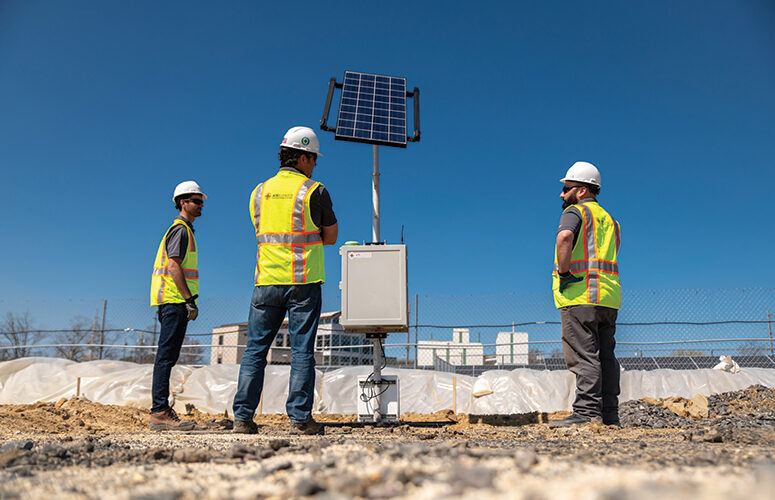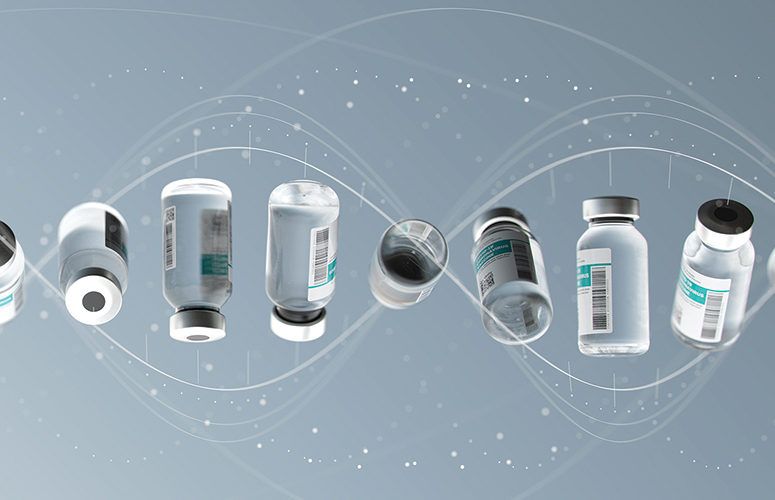
Bringing Environmental Technologies to the Forefront
Discover how environmental engineering firms are using state-of-the-art methods to remediate our lands.
By Lisa Goulian Twiste, Contributing Writer On Jun 8, 2023Site remediation is part of an overall effort to improve New Jersey’s environmental health record. The most recent U.S. News & World Report study ranked the state No. 33 in “Natural Environment” (No. 25 in water and air quality, and No. 38 in pollution) – and there are a number of new and evolving technologies helping the process along while also reducing costs and disruptions to New Jersey businesses and communities.
For example, Milford-based PennJersey Environmental recently utilized an unmanned aerial vehicle (UAV or drone) from FAA-licensed contractor GeoSeek, LLC. that flies over an active or abandoned landfill to determine surface temperatures and monitor methane gas concentrations. The drone moves in a linear pattern back and forth across the site, recording temperature and data simultaneously with GPS coordinates, a process that can be easily repeated to get snapshots of a property over an extended period of time.
This technology represents an important innovation, as methane is flammable in air at concentrations above 5%, according to PennJersey President Rodger Ferguson, LSRP. He says environmental consultants had previously used lasers to detect methane gas in the air at or near ground level; putting that technology into a drone is the new twist.
“In the past, going out and getting that volume of methane data would take more than a week, with two people on the ground, or several weeks – and considerable expense – to set up a perimeter monitoring program with a laser,” he says. “Since the methane can get beyond the border of the site, it could be very difficult to access on foot. We were able to do this in one day. There is a huge cost savings with this technology.”
Initial use of the drone began last year on the abandoned Hamm Landfill in Lafayette – one of New Jersey’s approximately 850 landfills, the vast majority of which are old and no longer operational. Methane concentration on the Hamm Landfill did not reach dangerous levels, leaving PennJersey’s client, CEP Renewables, free to construct a 9 MW solar field on the site without re-constructing the abandoned methane collection system.
“With this project, we’re putting sustainable energy back into the grid using a site that really can’t be used for anything else,” Ferguson says, adding that PennJersey and CEP Renewables have other landfill solar projects in the pipeline as well. “It represents the highest and best use of these properties.”
Another recently developed technology comes from Fairfield-based GZA, whose Terrestrial Rapid Bio-Assessment (TRBA) tool uses the presence or absence of moths to provide a baseline score of a site’s ecological health as well as benchmark the site’s improvement over time.
“There are many species of moths – over 3,000 in New Jersey alone – and each like a canary in a coal mine gives information about the area it’s inhabiting,” says Blaine Rothauser, GZA’s senior ecologist, who has been working with New Jersey industries, corporate sustainability advocates and land use planners to improve ecosystems around remediated sites. “Each species is a good indicator of where the site fits – from highly impacted to highly naturalized – and understanding the life cycles of those species can start to draw a picture of the health of that site.”
Since TRBA launched three years ago, GZA has worked on about 10 locations in New Jersey, including a fragrance manufacturer’s active industrial property adjacent to Newark Bay, an area long impacted by industrial use. GZA collaborated with the city of Newark, conservation groups and the U.S. Fish and Wildlife Service on a large-scale ecological restoration project designed to re-establish a robust ecosystem that also includes building a walking path and gazebo for employees and encouraging them to care for the project through an annual Community Day.
“In the business world, ESG (Environmental, Social and Governance) is everything now. The new generation wants to work in environments that are functioning, and site facility managers want something quantifiable to be able to show their boards,” Rothauser says. “It’s all about using these types of initiatives to bring back the world that’s been so negatively impacted. The way the earth heals is to make them understand we’ve lost a lot of diversity to ecosystems.”
In addition, GZA subsidiary AirLogics has introduced an updated system to conduct air monitoring around environmental remediation sites that provides actionable, real-time data on emissions that may be migrating off-site to residential neighborhoods and other adjacent properties. This helps those responsible for contaminated sites and environmental contractors take action to reduce risk to human health and liability to those conducting the remediation.
This “smart” system can be programmed to alert managers when emissions exceed acceptable thresholds. And with sustainability in mind, the technology eliminates the need for heavy tanks and regulators typical of older-style instruments, which means it’s better for the environment, saves money, and removes health and safety risks associated with moving heavy tanks around a project.
“It’s not uncommon for sites undergoing remediation to impact neighbors via odors and various emissions when the ground is opened up, exposing and liberating contaminated media that has long been buried,” says Marc Hudock, operations manager for AirLogics. “Conducting real time perimeter air monitoring reduces risk to communities by providing actionable data to those responsible for performing remediation so they can intervene in real time when their work is causing emissions.”
Although not new, in-situ stabilization (ISS) is rising in popularity, according to Michelle Bouwman, LSRP, senior consultant for Somerville-based Verdantas. This technology, which immobilizes contamination by blending soil with a cement-like mixture as an alternative to excavation, has long been used to improve soil structural stability and remediate a variety of chemical compounds – especially at former manufactured gas plants and wood preservation sites impacted by creosote.
“ISS, which has been around since at least the 1980s, creates a structurally stable monolith of solidified material that is suitable for building on,” she says. “Newer approaches include mixing chemical treatment reagents with fluid ISS grout, which has potential added remediation benefits. With increased disposal and trucking prices in the current economic environment, ISS continues to be a good alternative for conventional dig and haul remediation approaches.”
Verdantas recently completed a large-scale ISS project in central New Jersey that consisted of over 150,000 cubic yards of stabilized soils containing tar and tar-like products with various contaminants. The ISS approach resulted in a significant reduction of transportation, disposal and backfill costs, resulting in approximately $10 million in cost savings versus traditional excavation and disposal. The site is now being redeveloped for industrial use.
“Using an ISS remedy reduces the volume of waste to be generated versus excavation,” she adds. “The reduction in waste preserves landfill capacity and reduces truck traffic and related carbon emissions, noise, and inconvenience to surrounding communities. ISS also creates a structurally stable base for construction, which is an important consideration when redeveloping a contaminated site.”
To access more business news, visit NJB News Now.
Related Articles:





